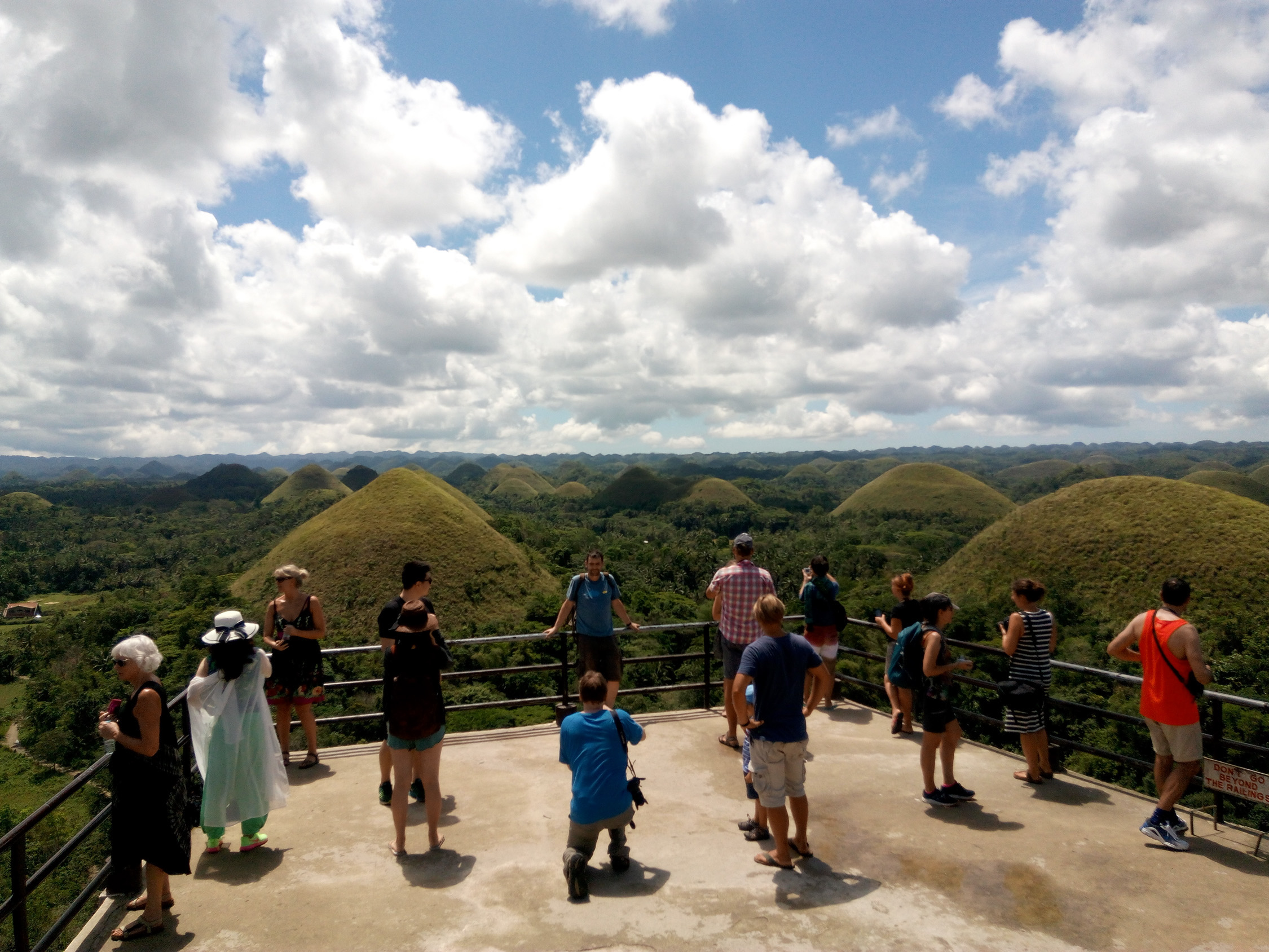
NATURAL MONUMENT Tourists get a perfect view of the Chocolate Hills, Bohol’s top natural attraction and a declared natural monument, from a view deck in Carmen town in this photo taken in 2017. —LEO UDTOHAN
TAGBILARAN CITY — Bohol government leaders have vowed to help craft measures to protect Chocolate Hills, one of the world’s wonders – one that will tailor-fit the province.
Bohol Gov. Erico Aristotle Aumentado, in a Senate committee hearing on April 3, said the issue involving the Chocolate Hills is not just environmental but social.
“As public servants at the helm of the provincial government, we take our responsibility seriously to preserve the natural wonders of our province so that the next generation can enjoy them as well,” he said in his opening statement before the Senate committee on natural resources headed by Sen. Cynthia Villar.
“We should not overlook the needs and rights of the people residing and living within the protected areas and whose livelihood and means of income are dependent upon the land, ” he added.
Last month, Bohol’s Chocolate Hills came into the limelight after illegal structures were discovered at Captain’s Peak Garden and Resort in Sagbayan town and Bug Agta in Carmen town–both within the protected area.
Authorities ordered the closure of the two establishments for lack of necessary government permits, including environmental clearance certificates (ECCs) and tourism business permits.
While tourists have been coming to the province before it was designated as a Global Geopark by the United Nations Educational, Scientific and Cultural Organization (UNESCO), Aumentado said the status gives Bohol an “added advantage” in the world tourism industry.
“We appreciate that in Bohol, we have active advocates for the environment, concerned citizens, civil society organizations, who keep the government in check and help shape public policy,” he added.
Aside from Villar, also present during the proceedings were Senators Nancy Binay, Loren Legarda, Rafael Tulfo, and Ronald de la Rosa.
Aumentado recalled that 25 years ago, Bohol was among the top 20 poorest provinces in the country and was also a hotbed of communist insurgents.
Boholanos then made poverty reduction a primary objective through agriculture and tourism.
Several years later, the governor said Bohol was excluded in the poorest provinces’ list, and was declared insurgency-free by the Armed Forces of the Philippines in 2010.
Aumentado said Boholanos are aiming for inclusive growth, not only for the hotels, resorts, restaurants and food chains but as well as for barangay folks, the carenderia(eatery) owners, and other small and medium entrepreneurs.
“We don’t want to kill the goose that lays the golden egg. Much as we want to see the lives of Boholanos improve, we don’t want it to be at the cost of destroying our environment or to ‘uglify’ lovely sceneries of our province,” he said.
Aumentado concluded that “the challenge, therefore, is not just to protect our environment but to do so while nurturing the social fabric of our communities.”
The committee questioned and discussed in length why the Department of Environment and Natural Resources (DENR) issued ECCs on some protected areas.
The DENR was asked to explain why the issuance of a Protected Area Management Board (PAMB) clearance was left to the discretion of barangay captains, and why ECCs were issued although there were violations committed by some entities.
Last April 1, a congressional briefing was held where Aumentado and his team were able to provide insights and position to Palawan Rep. Jose Alvarez of the committee on natural resources.
Alvarez committed to work with three district representatives of Bohol: Edgar Chatto (first district), Vanessa Aumentado (2nd district) and Alexie Tutor (3rd district) in the amendments to the Expanded National Integrated Areas Protected System (NIPAS) law and other existing guidelines to address ambiguity and gaps.
Aumentado and Board Member Jamie Villamor and other stakeholders will help in the crafting of the proposals. They also requested assistance in the lobbying to DENR on matters relating to protected areas and other environmental concerns so guidelines will fit Bohol.
Chocolate Hills, a geological wonder, consist of some 1,776 of conical shape and sizes spread over the towns of Bilar, Carmen, Batuan, Sierra Bullones, Sagbayan and other towns.
According to DENR, the hills are protected under the Expanded National Integrated Areas Protected System Act or Republic Act 7586.